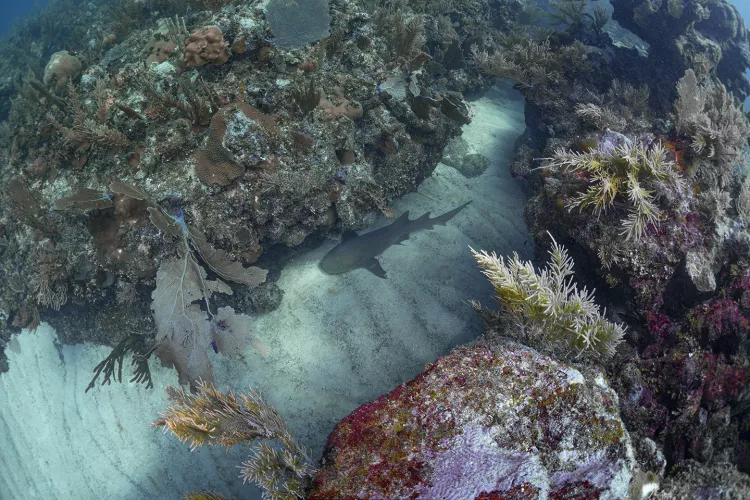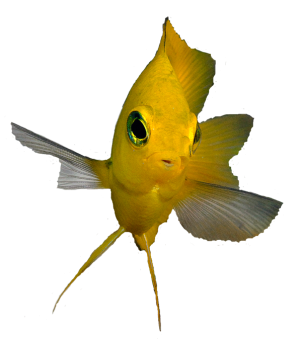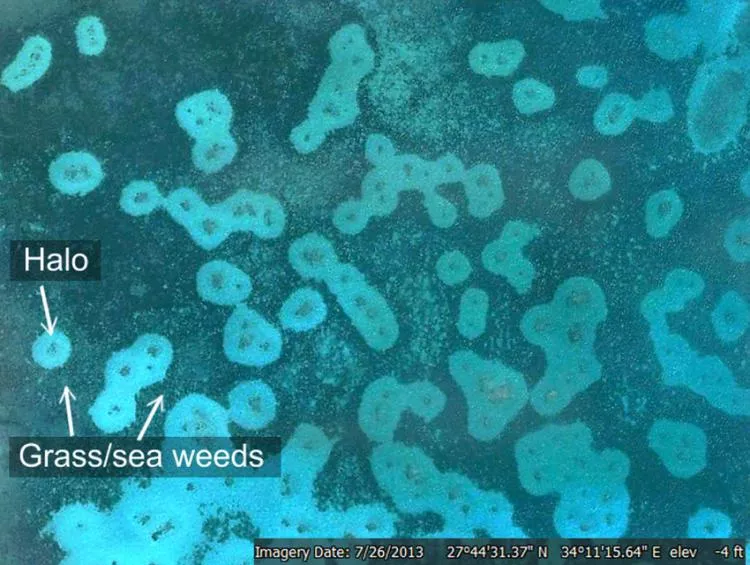Reef halos and soundscapes may provide a window into reef health
Coral reef halos, clearly visible from satellite imagery, may provide a window into reef health around the world, and listening to the sound of reefs may help track the state of their health.
Coral reef halos, also known as grazing halos or sand halos, are bands of bare, sandy seafloor that surround coral patch reefs. Fish and invertebrates hide in a patch of coral and venture out to eat algae and seagrass that cover the seabed.
They only dare stray a certain distance from cover in any direction for fear of predators, which explains why the cleared area in the midst of the lagoon’s algal meadows is circular.

But many marine scientists wondered how some halos could grow so large if herbivores were scared to venture very far from the protection of the reef. Elizabeth Madin, assistant research professor at the Hawai'i Institute of Marine Biology and her colleagues filmed the behaviour of fish around reefs with halos, they found herbivore behaviour alone failed to account for the barren sand.
When researchers monitored fish activity at night they found an explanation: fishes that root through the sand, turning up and eating invertebrate prey. All that rooting around dislodges the algae growing on the sand, expanding the halo.
Indicators of reef health
Understanding the full suite of mechanisms governing halo formation and maintenance may enable us to use them as proxies for species interactions. Given the global extent of halos, their role in affecting sedimentary carbon storage, and their relationship with marine reserve existence and maturity, they may ultimately serve as globally relevant indicators of coral reef ecosystem functioning and health.

Listening to corals
Monitoring the sounds of coral reefs can also serve as a non-intrusive, inexpensive and efficient method for tracking the state of their health – and for planning better conservation interventions in the long run.
The crackle and clicking sounds we hear underwater are from life unfolding. Fish chat with each other or graze, and hard-shelled creatures scrape against the surfaces.
New research shows that degraded coral communities do not sound as crackling and vibrant as healthy ones because the reduced biodiversity means less activity, so you can in effect judge the health of a reef by its decibel level.
While healthy reefs give readings 0f 2-8 kilohertz, less diverse reefs tend to be above 12kHz, as they become overpopulated with macroalgae, which create bubbles of oxygen that float to the surface and pop, making a specific high-frequency sound.
This type of data collection has the potential to be highly cost-effective, cover a large area and be a constant source of information, as opposed to intermittent diving surveys.
Katey Lesneski, director of restoration science at Coral Vita,




























